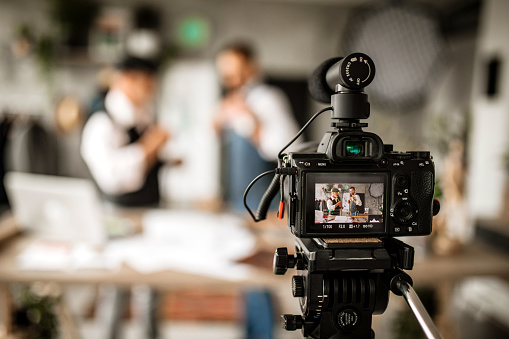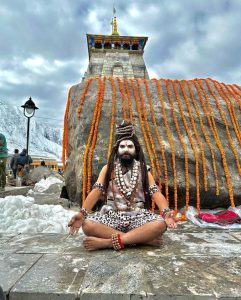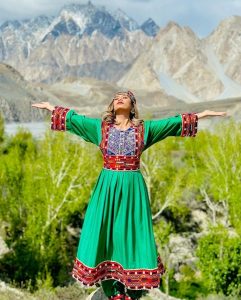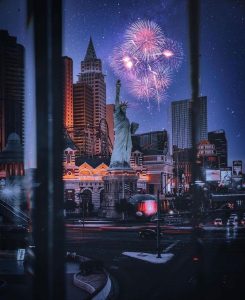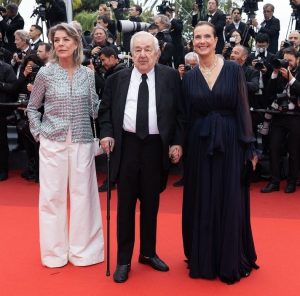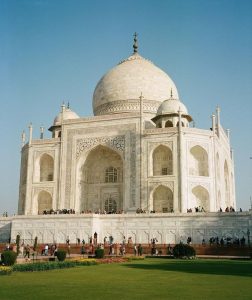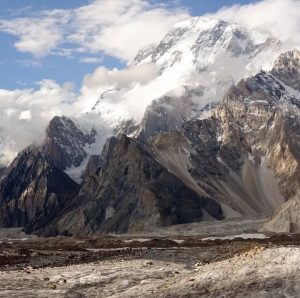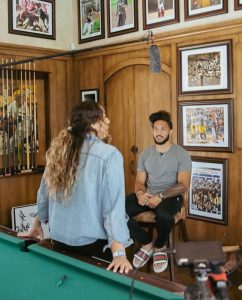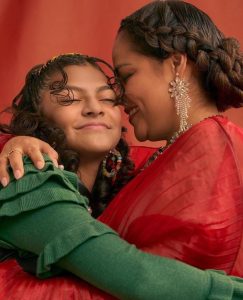Last Updated on December 5, 2023 by Sharon Advik
When it comes to documentary filmmaking, having the right camera can make all the difference.
Sony has long been a go-to brand for documentary filmmakers due to their high-quality cameras known for their versatility and reliability.
This article will explore some of the best Sony cameras for documentary filmmaking and their features and benefits.
Whether you’re a seasoned filmmaker or just starting, choosing the right camera is crucial to capturing the story you want to tell.
Sony’s cameras offer a range of features that can help you to achieve your vision, from high-resolution sensors to advanced autofocus systems.
I have explored some best Sony cameras for documentary filmmaking, including their image quality, battery life, durability, and ease of use.
So, whether you’re filming in the studio or the field, you’ll be able to find the perfect camera to bring your story to life.
Which is the Best Sony Camera for Documentary?
Here are my recommended top 9 Best Sony Camera for Documentary:-
Sony Alpha 7 III (Best Sony Camera for Documentary)
As a documentary photographer and videographer, I have always wanted to try new gear and explore new techniques to improve my craft.
So, when I heard about the Sony Alpha 7 III, I was immediately intrigued.
After researching, I decided to take the plunge and purchase the camera.
At first, I was a bit intimidated by the size and complexity of the camera.
It has many advanced features and settings I wasn’t used to working with.
However, I was determined to learn how to use the camera to its fullest potential, so I started reading the manual and watching tutorials online.
When I used it, it was the best camera for a documentary.
Features:
- ISO: Native (100-51200), Extended (50, 64000 -204800)
- CMOS: 24MP Full-Frame Exmor
- Auto-focus system: Hybrid 693-Point
- BIONZ X: Front-End LSI and image processor.
- UHD: 4K30p Video with HL and S-Log3 Gammas
- Aperture: f/3.5-22 (W) / f/5.6-36 (T)
ISO/Shutter speed:
While making any documentary, I used to pick up 64000 ISO.
It gives finely textured pictures; I shoot my documentary using its fast shutter speed of 1/8000th of a second. It is also used as slow for 30 seconds.
However, the camera also has a “bulb” mode that enables exceptionally lengthy shutter times with the mote shutter/timer.
Aperture/Depth of Field:
I used to set the maximum aperture, which is 16-35mm f/2.8 GM; it helps me to capture sharp images at all edges.
While capturing images in single shooting mode, its RAW bit depth is 14-bit.
The bit depth only goes down to 12-bit when shooting continuously.
White Balance/Frame rate:
Frame rates up to 120 fps are also supported for Full HD 1080p recording, while the 100 Mb/s XAVC S codec, wrapped in an MP4 file with 4:2:0 sampling, is used for both 4K and FHD resolutions.
I used the Auto white balance effect to make a documentary.
Is it the best camera?
I have become more and more comfortable using this camera.
I have experimented with different shooting modes and settings and found the camera incredibly versatile.
Whether I am shooting photos or videos, making a documentary, in the studio, or out in the field, I always find it the best Sony camera for a documentary.
Conclusion:
My experience with the Sony Alpha 7 III has been nothing but positive.
Its powerful, versatile, and reliable camera has allowed me to take my photography and videography to the next level.
While it may have taken some time to get used to its advanced features, I am now confident in using the camera to its fullest potential.
Click here to buy.
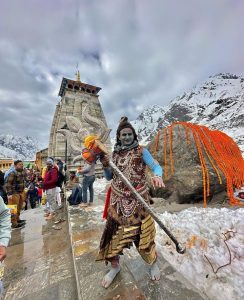
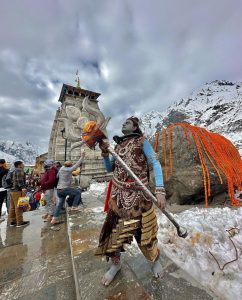
Sony A7R IV (Best Sony Camera for Documentary)
I have always been fascinated by documentaries.
As a young girl, I would stay up late watching them on TV, dreaming of one day creating my own.
My passion for storytelling and capturing real-life moments grew as I got older.
After years of saving up, I finally had enough money to invest in a high-quality camera that would allow me to capture the stunning footage for my documentaries.
After researching different options, I decided on the Sony A7R IV.
I was immediately impressed by the camera’s incredible resolution, allowing me to capture even the small minor details with stunning clarity.
I was also thrilled with the camera’s high-speed autofocus system, allowing me to capture fast-moving action and fleeting moments quickly spent a few months, capturing the complete lifestyle of my community.
I created this desire with the help of the best Sony camera for the documentary.
Features:
- CMOS: 61.2mp full-frame sensor.
- Autofocus: powerful tracking system.
- Focus per second: 10fps
- OLED viewfinder: 5.76M dot.
- Sensor depth: 4K video
ISO/Shutter speed:
When I used to show the cultural events of my community, I set ISO 200 because there was enough light and more than 200 ISO, and the image became a blur.
In events, I also preferred low ISO because it helps to minimize the noise.
And shutter speed that I used is 1/8000 of a second, down to 30 seconds.
Aperture/Depth of field:
I usually use a maximum aperture which is 3.5.
When taking pictures, I used a 14-bit depth of field, and when making videos to show cultural lifestyle, I used 12-bit DOF.
White Balance/Frame rate:
I adjust the color tone according to the light condition of the ambiance.
Because in daytime functions, it needs auto setting, but in night functions and I must use white balance to capture clear images.
I used 10 frames per second for continuous shooting.
Is this the best camera?
While working on my documentary, I realized how much this camera had elevated my work.
The camera’s advanced features allowed me to capture footage I could never have with my old camera.
The stunning clarity of the footage and the camera’s intuitive controls allowed me to focus on telling the story rather than worrying about technical issues.
There is no doubt that professional photographers are lining up to get this camera because it has the best-resolution full-frame sensor currently available on the market.
Conclusion:
After completing my documentary, I submitted it to several film festivals.
To my delight, my film was selected for screening at a major festival.
Watching my documentary on the big screen, I felt a sense of pride and accomplishment.
None of it would have been possible without my Sony A7R IV.
My experience with my camera had shown me just how powerful a tool a high-quality camera could be in the hands of a skilled documentary maker.
With my passion and camera, I could tell the stories of my community in a way that genuinely moved and inspired my audience.
Click here to buy.
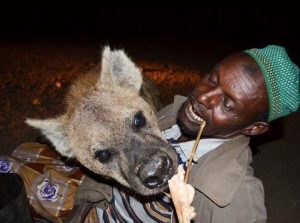

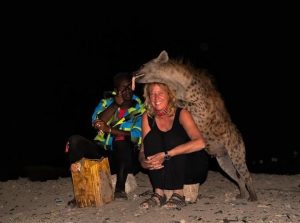
Sony A7 IV (Best Sony Camera for Documentary)
I had always been a nature lover, but it wasn’t until we started hiking in the mountains that I became passionate about photography.
I loved nothing more than capturing the stunning beauty of the natural world through my camera lens.
I had been using a primary point-and-shoot camera, but I knew I wanted something more advanced.
After researching, I decided to invest in the Sony A7 IV.
At first, I was intimidated by the camera’s advanced features.
I had never used a camera with so many options and settings before.
However, after spending some time with the camera and reading the manual, I quickly learned how to use its many features to my advantage.
I found this camera as the best Sony camera for a documentary.
Features:
- Maximum aperture: 3.5 kit lens.
- Dimensions: 5.2 x 3.8 x 3.1 inches.
- Shutter speed: 1/8000 -30 sec.
- Weight: 23.2 oz, which is almost 658 g with batteries.
- Shooting rate: up to 10fps.
ISO/Shutter speed:
At the start, I was completely unaware of the camera setting.
My friend arranged its complete set.
With these particular settings’ help, I shot my blog documentary with 100 ISO and 30 seconds shutter speed.
Aperture/Depth of field:
When I started to make a blog about hiking adventures, I used to go to head dial mode and turn the camera’s aperture priority.
This change in a setting ultimately affects the depth of field; when I needed a small slice of frame focus, I used to select a wide f/2.8 aperture.
White Balance/Frame rate:
I usually used 30 frames per second when making a documentary of a hiking journey with its daylight effect for white balance.
Is this camera the best?
One of the things that I loved about it was its advanced autofocus system.
The camera had 693 phase-detection autofocus points and 425 contrast-detection autofocus points, allowing me to quickly capture fast-moving animals, moving pictures and videos during hiking, and other wildlife in sharp focus.
I have improved my skills in documentary-making with it because its features are pretty straightforward, and I am very comfortable using it.
Conclusion:
My passion for photography and making nature documentaries eventually led me to start a blog where I could share my photos and stories with others.
My stunning images and compelling narratives quickly gained a following, and I was soon approached by a publisher who wanted to turn my blog into a book.
My book was a huge success, and I was soon approached by a major outdoor gear company that wanted to use my photos in their mountain hiking documentary.
Click here to buy.
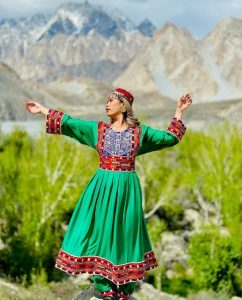
Sony A7S iii (Best Sony Camera for Documentary)
As a documentary filmmaker, I had been looking for the perfect camera for years.
I had several Sony cameras and was always dressed with their quality, but none had my needs.
That was until the Sony A7S III was released.
I had heard the buzz around this camera and decided to try it out for my work.
The results blew me away.
It found the best Sony camera for documentary work.
Its low-light capabilities meant I could capture footage in even the darkest environments without compromising quality.
Its autofocus system was lightning-fast and incredibly accurate, particularly useful when capturing fast-paced action.
Features:
- CMOS: 12MP Full-Frame Exmor.
- Autofocus: 759-Point Fast Hybrid.
- Frame rate: UHD 4K 120p Video
- Internal recording: 10-Bit 4:2:2
- 16-Bit Raw Output.
ISO/Shutter speed:
One day it was a sunny day, so I adjusted ISO to 400 and the shutter speed to 1/400 or 1/500.
You know what? I ultimately created a natural look.
No one can believe that it was a simple picture.
Aperture/Depth of field:
On that sunny day, I adjusted my aperture to f/16 well; I kept it constant and did not touch the aperture at any time.
While the depth of field is set at 4K in 10 bits, this setting can capture the ultra-high definition of documentary making.
White Balance/Frame rate:
I used to capture stunning videos with 4K footage at 120fps at 280 mb/s in full frame.
This allowed me to capture incredibly detailed slow-motion shots, which added an extra layer of emotion and drama to my documentary.
Is this camera the best?
It is the best for low-light shooting, video capabilities, and autofocus systems.
I am using it as a professional for various types of photography and videography, including documentary work.
Ultimately, the best camera for someone will depend on their specific needs and preferences, and it’s essential to research and test different cameras to determine the best fit.
Conclusion:
Word quickly spread among the documentary community, and soon it became the go-to camera for filmmakers worldwide.
I was thrilled to have discovered such a powerful tool and couldn’t wait to see what stories I could tell with it.
Thanks to the Sony A7S III, I captured some of my career’s most compelling and impactful footage.
No wonder the camera had become known as the best Sony camera for documentary work.
Click here to buy.

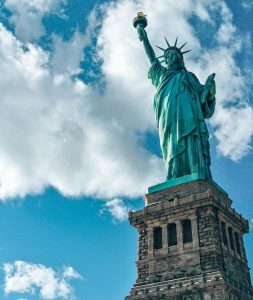

Sony Alpha 1 (best Sony camera for documentary)
I have used many different cameras throughout my documentary filmmaking career.
I had always been impressed with Sony’s lineup, but something special about the Sony Alpha 1 stood out.
When I picked up the Sony Alpha 1, I knew I had found the perfect camera for my documentary work.
The camera was high-speed, with a blistering 30 frames per second continuous shooting speed, allowing me to capture every fleeting moment of action with stunning clarity.
Features:
- CMOS: 50.1MP39 and35 mm
- Sensor: integral memory
- Engine boosts speed: Advanced BIONZ XR up to 8x40
- Frame rate: 30fps 41
- Movie-making capacity: 8K 30p and 4K 120p 42
ISO/Shutter speed:
ISO and shutter speed are both key elements of exposure control in documentary-making.
It has a native ISO range of 100-32,000, which can be expanded to 50-102,400.
I capture high-quality images in various lighting conditions, from bright sunlight to dimly lit environments.
The camera also features a fast shutter speed of up to 1/8000 sec, which allows me to freeze fast-moving subjects and capture crisp, clear images.
Aperture/Depth of field:
Aperture and depth of field are essential for controlling the amount of light that enters the camera and the amount of sharpness in the image.
It has a wide aperture range, from f/1.2 to f/16, which allows me to create a shallow depth of field for artistic portraits or a deep depth of field for landscape shots.
White Balance/Frame rate:
White balance and frame rate are essential for creating accurate colors and smooth motion in video footage.
It has an advanced white balance system that automatically adjusts to different lighting conditions; I manually adjust the white balance to achieve the desired color temperature.
The camera also has an impressive frame rate of up to 120 frames per second in 4K mode, which allows me to capture smooth slow-motion footage with incredible detail.
Is this the best camera?
This is the best camera, as it has incredible video capabilities; provides stunning clarity and detail that is perfect for capturing the beauty and drama of the natural world.
Its low-light capabilities were also a game-changer for me.
I often worked in dimly lit environments, and the camera’s ability to capture clear, detailed images in these conditions was a huge advantage.
Conclusion:
Mark took the Sony Alpha 1 on his latest documentary project, a journey through some of the world’s most remote and beautiful parts.
With incredible speed, autofocus, and video capabilities, the camera was perfect for capturing the stunning landscapes and fascinating wildlife documentaries I encountered.
I reviewed the footage I had captured and found it is the best Sony camera for documentary work.
Click here to buy.

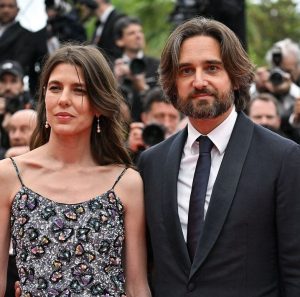
Sony A9ii (Best Sony Camera for Documentary)
I had always been fascinated by the world around me, and as a documentary filmmaker, I loved capturing the moments that defined humanity.
I had tried several cameras over the years, but nothing had entirely met my expectations until I tried the Sony A9 II.
With its impressive features, it quickly became my go-to camera for all of my documentary work.
The camera’s high-speed performance was awe-inspiring, allowing her to capture fast-paced action easily.
The camera’s versatile lens selection was also a huge plus, with Sony having an extensive range of E-mount lenses that were compatible with it.
This allowed me to choose the best lens for my specific needs, whether she was shooting portraits, landscapes, or action.
Features:
- CMOS sensor: 24.2-megapixel full-frame stacked Exmor RS CMOS sensor.
- Image processor: BIONZ X allowed for fast processing and high-speed shooting.
- Frame rate: up to 20 frames per second with full autofocus and auto exposure tracking.
- ISO range: 100-51,200.
- Monitor type: 5cm (3.0-type) type TFT
ISO/Shutter speed:
It was also impressive in low-light performance, with a native ISO range of 100-51,200 that could be expanded to 204,800.
This meant I could capture high-quality images in low-light environments, which is essential for documentary work.
Aperture/Depth of field:
It has a wide range of aperture options, but I used most Sony E-mount lenses having a maximum aperture of f/1.4 to f/4.
This allows you to create a shallow depth of field, which can add a cinematic look to your documentary footage. I also used to capture in a bit depth 14-bit while clicking pictures in single shooting mode.
When the shooting process was in continuous mode, the bit’s depth dropped to 12-bit.
White Balance/Frame rate:
When it came to video, I used auto-white balance.
It could shoot 4K video at up to 30 frames per second, with full HD and HD recording options.
The various picture profiles and color modes allowed greater creative control over the final image.
Is this the best camera?
I was also impressed by the camera’s autofocus system, which had 693 phase-detection AF points covering approximately 93% of the image area and 425 contrast-detection AF points.
The system was incredibly accurate and could track subjects even in challenging lighting conditions, which was a game-changer for me.
Conclusion:
I had used it on several documentary projects, and the camera had never let her down.
While I knew whether it was the best Sony camera for documentary work depended on personal preferences and specific needs, it was a top contender.
It was a camera that allowed me to capture the world in a way that felt authentic to live, and for that, she was grateful.
Click here to buy.

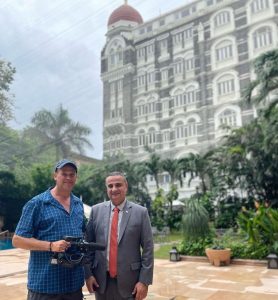
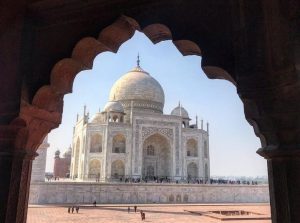
Sony ZV-1 (best Sony camera for documentary)
I was a budding filmmaker who had always been passionate about documentary work.
I had been using my phone to capture footage, but it didn’t give me the level of quality I wanted.
That was until I purchased the Sony ZV-1 at my friend’s recommendation.
I used it on several documentary projects, and the camera exceeded my expectations every time.
Whether it was the best Sony camera for a documentary depended on personal preferences and specific needs.
Still, it was the perfect tool for capturing the world around her.
Features:
- CMOS: 2-megapixel 35 mm full-frame
- Processing engine BIONZ X
- Shooting rate: 20fps with AF/AE tracking.
- Wide AF coverage: 693-point phase-detection.
- Contrast detection AF points: 425 points.
ISO/Shutter Speed:
Its low-light performance was also impressive, with a native ISO range of 125-12,800 that could be expanded to 25,600.
I used a shutter speed of 1/2000 to 4 sec in bulb mode.
This allowed me to capture high-quality images in low-light environments, which is essential for documentary work.
Aperture/Depth of Field:
I used a maximum aperture which range is F/2.8.
It creates the aesthetically attractive bokeh effect by naturally having a small depth of field.
Sony has made a shortcut button to turn the bokeh effect on or off.
White Balance/Frame Rate:
When it came to video, it was a game-changer.
It could shoot 4K video at up to 30 frames per second, with full HD and HD recording options.
I used a fluorescent white balance to complete my documentary.
The camera’s various picture profiles and color modes allowed greater creative control over the final image.
Is it the best camera?
The Sony ZV-1 also had various features explicitly designed for vlogging and documentary work.
For example, the camera had a built-in directional three-capsule microphone that could capture clear audio even in noisy environments.
It also had a background defocus function that could create a shallow depth of field, which helped isolate the subject from the background.
Conclusion:
It is a versatile and powerful camera that is ideal for documentary work.
Its compact size, impressive features, and ease of use make it an excellent option for amateur and professional filmmakers.
Whether I am shooting interviews, landscapes, or action, the Sony ZV-1 is a camera that can help me authentically capture the world pick here to buy.
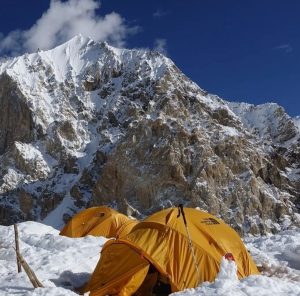
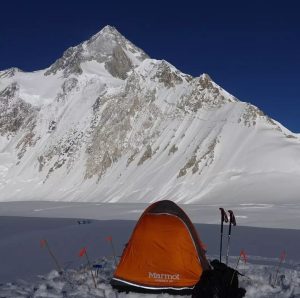

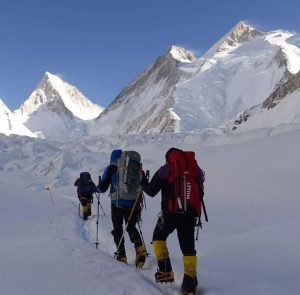
Sony FX3 (Best Sony Camera for Documentary)
I went to my uncle’s home on my last year’s vacation.
As a profession, I was a filmmaker passionate about making documentaries.
I had been using various cameras for my projects, but I was never delighted with the results I was getting.
I felt something was missing, and I was always looking for a camera to help me capture my subjects’ essence and tell their stories in the most compelling way possible.
One day, while browsing through a camera store, I stumbled upon the Sony FX3.
I had heard about it before but had never considered it an option for my work.
As I read more about the camera and its features, I realized it might be the solution I sought.
I decided to give the Sony FX3 a try, and I immediately fell in love with it.
The camera was lightweight and easy to handle, which made it perfect for my documentary work.
The image quality was stunning, and the camera captured every detail of my subjects, from the wrinkles on their faces to the expressions in their eyes.
Features:
- CMOS sensor: 10.2MP Full-Frame Exmor R
- Autofocus: Phase detection, face tracking, eye focus.
- UHD: 4K up to 120 | 1080p up to 240.
- Adapter Handle: Detachable 2 x XLR/TRS
- Bit range: 10-Bit 4:2:2 XAVC S-I, 16-Bit Raw Output.
ISO/Shutter Speed:
The range of its ISO settings is from 80 to 102, 400; I usually keep ISO setting low, which is 80 or 100, while capturing videos for my documentary.
I used 1/1 to 1/8000 of a second to create a perfect effect; it also helps me to freeze fast-moving action.
Aperture/Depth of Field:
The aperture settings on this camera allow me to adjust the size of the camera’s lens opening, which controls the amount of light that enters the camera.
The aperture is measured in f-stops, and lower f-stop values (such as f/1.4 or f/2.8) indicate a larger lens opening and more light entering the camera.
This can result in a shallower depth of field, which can help isolate your subject from the background and create a more cinematic look.
White Balance/Frame Rate:
When shooting outdoors on a sunny day, I used the daylight white balance setting to achieve accurate color reproduction.
Additionally, the choice of frame rate may depend on the type of scene I was shooting – for example, I used to use a slower frame rate for a more contemplative scene or a higher one for a fast-paced action sequence.
Is it the best camera?
One of the things that I loved the most about the Sony FX3 was its low-light capabilities.
As a documentary filmmaker, I often worked in less-than-ideal lighting conditions.
But with it, I could capture stunning footage even in low light, which gave me more flexibility when it came to shooting.
Conclusion:
Ultimately, I knew I had found the best camera for my documentary work.
It was everything I had been looking for and more.
It allowed me to capture the essence of my subjects and tell their stories in the most compelling way possible.
And as she continued using the camera, I knew I could create documentaries that would inspire and captivate my audience for years.
Click here to buy.

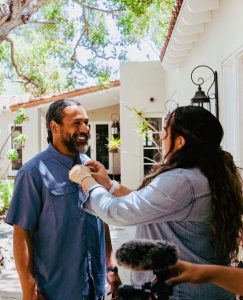
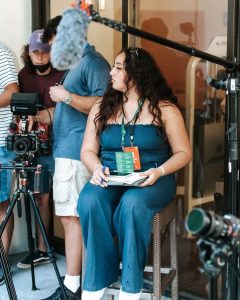
Sony A7c (Best Sony Camera for Documentary)
One day my friend and I planned to go on a tour.
We were trying to make a documentary for our tour.
We struggled to find a camera to capture the visuals we were looking for.
We tried several cameras, but each one seemed to have limitations and drawbacks.
That was until we discovered the Sony A7c, a compact full-frame camera that offered a range of advanced features designed explicitly for documentary filmmakers.
My friend Alex was immediately impressed by the Sony A7c’s small size and lightweight design, which made it easy to carry with us wherever we went.
But I was impressed by the camera’s technical capabilities.
The camera performed flawlessly, allowing us to capture the beauty and complexity of the island’s ecosystem and the struggles of the people who lived there.
Features:
- CMOS: 24mp BSI full-frame sensor.
- Processor: Bionz X processor.
- AF system: Real-time tracking.
- Oversampled: 4K video at up to 30p
- S-Log: 8-bit S-Log and HLG.
- Focus per second: up to 10 fps.
- Touch screen: Fully expressive 921k-dot
ISO/Shutter Speed:
ISO and shutter speed are two of my footage’s most important settings for controlling exposure.
It offers a wide range of ISO settings, from 100 to 51,200.
This allowed me to adjust the camera’s sensitivity to light based on the specific lighting conditions of my scene.
I set a range of shutter speed options from 30 seconds to 1/8000th of a second.
This allows you to control the time the camera’s sensor is exposed to light, which can be used to freeze motion or create a sense of motion blur.
Aperture/Depth of Field:
I customized aperture controls to adjust the size of the camera’s lens opening to control the amount of light that enters the lens.
This can also be used to control the depth of field.
This is especially important when shooting portraits or other close-up shots, where you may want to blur out the background to create a sense of depth and visual interest.
White Balance/Frame Rate:
White balance allowed me to adjust the camera’s settings to account for the color temperature of the lighting in my scene.
It offered various white balance options, including daylight, tungsten, and custom white balance.
We used different effects according to the light.
We also changed different frame rates while shooting but mainly used 24fps.
This gave us desired visual effect, such as a more cinematic look or a more fast-paced action sequence.
Is this the best camera?
The camera’s full-frame sensor and advanced processing capabilities allowed us to capture stunning visuals with incredible detail and dynamic range.
Whether we were shooting in bright sunlight or low-light environments, it delivered stunning images that truly captured the scene’s essence.
From my point of view, this is the best camera for a documentary.
Conclusion:
When the documentary was complete, we submitted it to several film festivals, where it was met with critical acclaim.
Many reviewers praised the film’s stunning visuals and technical excellence. Several noted that it was the perfect camera for capturing the imagery that made the documentary so powerful.
Click here to buy.
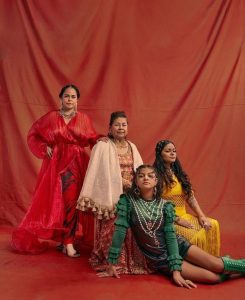
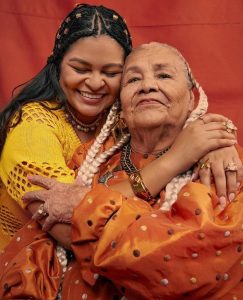
CONCLUSION:
Alright, guys, that concludes all the cameras we will discuss today in this article.
Do you guys have any experience with these cameras? What are your thoughts on them?
Which are your Best Cameras for a Documentary?
Is there a camera I didn’t mention in this article that you love using for macro photography?
Would you please leave your thoughts and comments below?
Related post:
Best cameras for filmmaking on a budget:
I am a Professional and Certified Digital Photographer born in the USA. I have been in this field of photography for 22 years, and in these years, I have used many photography lenses and Cameras, which I want to share here on this website about my experience. The idea for Bestoflens.com is to provide honest information about different Lenses and Camera products in the format of a “Best lenses for AYZ” list. I want this website to be the last destination for people to pick the best Cameras and lenses to fit their needs. You can find our unbiased reviews here on Bestoflens.

